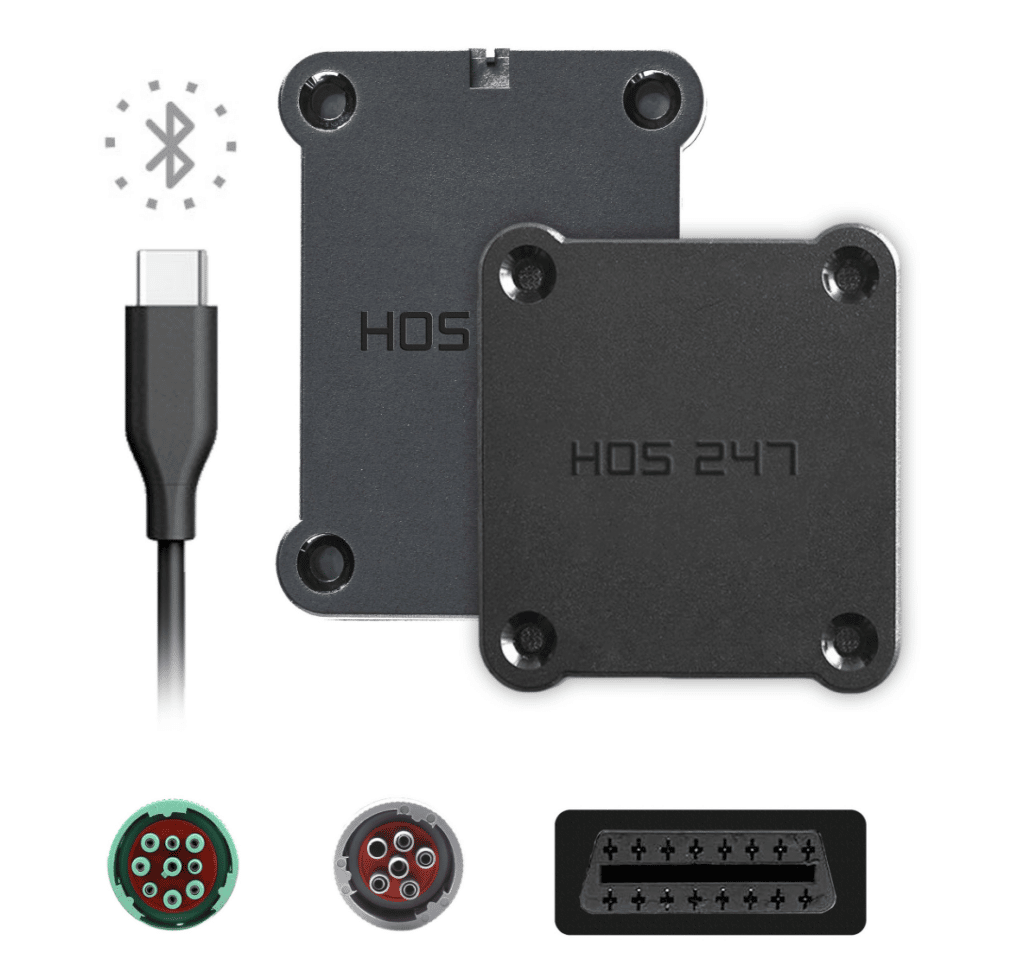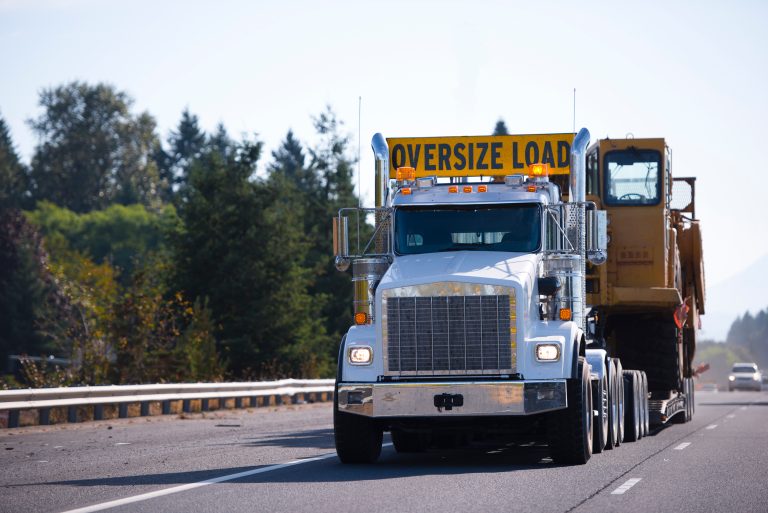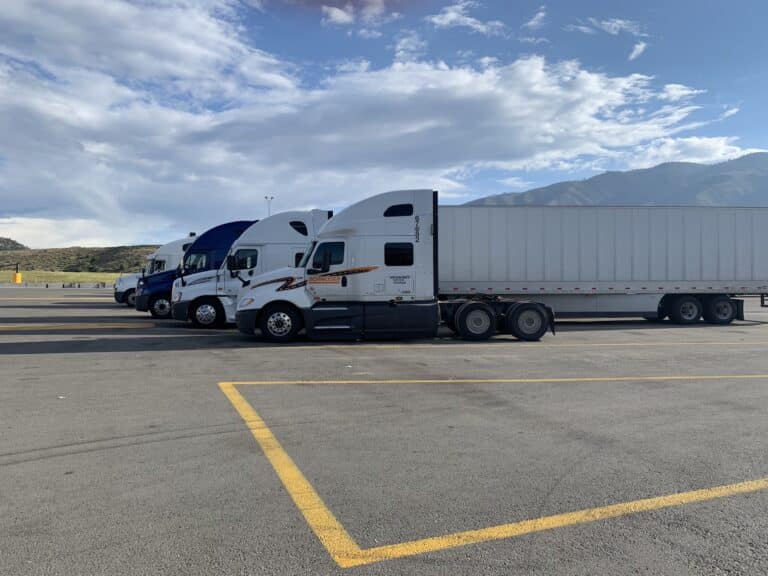The federal mandate for electronic logging devices for trucks is now in full force. This new requirement became law in February 2016 with a mandatory implementation date of December 2017.
An exemption was originally made for AORBD (Automatic On-Board Recording Device) equipped trucks, but this expired as of December 2019.
Bottomline, drivers need an ELD solution to legally operate a truck in 2020 whether you’re a big carrier or a small owner-operation.
Industry Leader in ELD for Trucks
HOS247 is an industry leader in providing electronic logbooks. We are able to provide effective solutions to both big carriers and small owner-operators. Our top-rated solution provides you with reliable hardware that prevents HOS (Hours of Service) violations.
ELD Mandate – Background
Drivers who go beyond the limits and drive too many hours are a hazard to themselves and other motorists. Recent studies indicate that driving tired can cause the same level of impairment as driving under the influence.
To prevent accidents, in 1937 the first federal law was passed requiring commercial drivers to log their hours of service. Paper log books were the standard in the trucking industry for many years.
The problem is that paper log books are not always accurate because it’s easy for drivers to make an honest mistake or for a carrier who is not following the rules to modify the paper log book.
To eliminate both human error and reduce opportunities for bad actors a new federal law was passed requiring elogs for everyone from large carriers to owner-operators. This requirement became law in 2016. A brief exemption was made for AORBD (Automatic On-Board Recording Device) equipped trucks, but this expired in December 2019.
Electronic logging devices for trucks record operational data for both the vehicle and driver. The driver information is focused on HOS (hours of service). This is to ensure commercial truck drivers stay within the hours of duty allowed to drive between rest periods. The HOS records driving hours, on-duty time (working but not driving), and rest time over the course of a haul.
Do you have any questions? Talk to ELD Advisor: 650-405-3372 or Request Callback
Who Must Comply with the ELD Mandate?
All truck drivers that are required to keep RODS (Record of Duty Status) are also subject to the federal ELD law. Violations will result in fines from DOT and may significantly delay a driver’s run.
The FMCSA estimates over 3 million drivers are required to keep RODS. Drivers must keep RODS under the follow conditions:
- The vehicle is over 10,000 pounds.
- The vehicle has a gross weight rating or gross combination weight over 10,000 pounds.
- The vehicle is designed or used to transport more than 15 passengers including the driver and the driver is unpaid.
- The vehicle is designed or used to transport more than 8 passengers including the driver and the driver is paid.
- The vehicle is transporting hazardous materials in any quantity that requires a warning placard.
All carriers big or small must keep a 24 RODS and comply with the ELD mandate if they answered “yes” to any of the conditions above. This can feel daunting at first, HOS247 is here to help.
As with all federal laws, there are a small number of exemption categories to this law. The exceptions to RODS are as follows:
- Driver-salesperson with a total driving time less than 40 hours in a 7 day period is exempt
- Oilfield carrier transporting oilfield equipment used for pipelines or well-site construction
- Short haul CDL driver that operates within 100 miles of the work location
- Non-CDL driver who operates within 150 miles of their home base
Most carriers don’t fall into any of the categories above and are required to RODS and comply with the ELD mandate.

What are the Truck Driver Elogs Exemptions?
In addition to the RODS exemptions there is also a separation list of ELD exemptions. Here are the exemptions as outlined by FMCSA and the Department of Transportation.
Drivers who use the timecard exemption for short hauls are not required to keep RODS or use ELDs. However, they must adhere to RODS requirements and prepare paper logs using AOBRD, or logging software. This is required under ANY of the following situations:
- Drivers can only use paper RODS for 8 days or less out of every 30-day period
- Drive-away Tow-away operators, where the vehicle being driven is a commodity being delivered, or the vehicle being transported is a motor home or recreation vehicle trailer with one or more sets of wheels on the surface of the roadway
- If the vehicle is manufactured before the model year 2000 (as shown in registration)
- Driver not required to keep RODS for 8 days or less out of every 30-day period
How is 8 day or less in any 30-day period determined? The 30-day period is not limited to a single month, rather it can be applied to any 30-day period. For example, March 15th to April 15th is determined to be a 30-day period.
Electronic Logging Devices for Trucks Must Support Trucking Exemptions
One of the key elements that make HOS247 a leader is the transportation industry in the flexibility of our ELD solutions.
Generally, HOS rules are in place to prevent tired driving and prevent accidents for everyone on the road.
However, there are a number of different reasons and scenarios where a driver may be temporarily exempt from the normal HOS regulations. These exemptions usually apply to one of three rules; 14-hour periods, the 11-hour rule, and 30-minute rest breaks. Here is the definition of each one of these rules.
What is the 14-hour rule? Drivers may not go beyond the 14th consecutive hour after coming on duty. They may not continue driving until they have taken 10 consecutive hours off-duty.
The maximum is 15 total hours for drivers of passenger vehicles. Additionally, off-duty time does NOT extend the 14-hour rule for both property and passenger drivers.
What is the 11-hour rule? A property driver can go a maximum of 11 hours after 10 consecutive hours of duty within a 14 hour timeline.
Drivers of passenger vehicles can go up to 10 hours after 8 consecutive hours off-duty.
What is the 30-minute rest break rule: drivers can’t continue to drive if 8 hours or more has passed since their last off-duty period of 30 or more minutes consecutively. However, drivers may work on non-driving tasks after 8 hours without taking a break.
Now that we’ve defined each one of these rules in more detail. Next are the legal exemptions to these rules for both property and passenger drivers.

HOS exemption #1: 30-minute break rule
Two types of drivers are exempt from this rule
- A) qualified short-distance drivers with a 100 mile provision
- B) qualified short-distance drivers who operate a non-CDL required vehicle with a 150 mile provision.
HOS exemption #2: 16-hour short-haul exception
Qualified drivers can extend the 14-hour driving restriction to 16 hours once every 7 consecutive days. However, a property driver can only use this exception if the following conditions are met
- The driver is returning to their normal work reporting location AND the carrier releases the driver from duty at the work location for the previous 5 duty tours the driver has worked
- he driver is returning to their normal work reporting location AND the carrier releases the driver from duty within 16 hours afte coming on duty the follow 10 consecutive hours off-duty AND the driver has used an exemption in the previous 6 days EXCEPT when the driver has begun a new 7 or 8 consecutive day work schedule with the start of any off-duty time of 34 or more consecutive hours.
Also be aware, drivers who use the 16 hour short-haul exemption can NOT use the non-CDL 150 mile exemption.
HOS exemption #3: Poor driving conditions
The “adverse driving conditions” exemption gives drivers the flexibility to extend a maximum of 2 hours when the right conditions are met.
This exemption can only be applied if the adverse driving conditions could NOT have been known before the driver started driving. Examples include unforecasted snow, fog, road closures due to accidents, and similar incidents.
Property drivers are limited to a maximum of 11 hours per shift. The poor driving conditions exemption can be used if it meets the requirements above and extends the driver’s shift to 13 hours. This does not apply to the 14 hour rule and all 13 hours of driving must be completed within the 14 hour window.
The rules for passenger drivers are different. They are limited to a maximum of 10 hours per shift. If the conditions for the adverse driving exemption are met then the driver can extend up to 12 hours. This does not extend the 15 hour rule for the passenger driver.
HOS exemption #4: Direct emergency assistance
In an emergency situation some or all HOS rules can be temporarily removed. A driver may complete their haul without violation if the run could have been reasonably completed absent the emergency.
These emergency conditions can only be declared by the president of the United States, state governors, or the FMCSA. The emergency exemption does not apply if none of these federal or state institutions have declared an emergency.
Do you have any questions? Talk to ELD Advisor: 650-405-3372 or Request Callback
How to Choose the Right ELD solution?
There are hundreds of Electronic Logging Devices for trucks out there. Whether it’s a big carrier or small owner-operator there are a few important factors to consider when deciding on the right ELD solution.
Here are the most critical factors to consider.
- #1 FMCSA self-certified: The first step in narrowing down the potential ELD providers is checking the FMCSA self-certification list.
- #2 Customer Support: No matter how good an ELD solution is at some point the driver is going to need technical assistance. Call the customer support line. If you can’t reach a human or get clear answers to your questions now, it’s a sign you need to consider another ELD provider. HOS247 has one the best customer support in the industry.
- #3 User Friendly: Drivers aren’t computer programmers nor do they want to be. Test the potential ELD providers as much as possible ahead of time. Is the hardware easy to install and the software easy to understand? Every minute your driver spends troubleshooting a poorly designed ELD solution is wasted time and money.
- #4 Clear Pricing: A good ELD solution should have a clear pricing program so you know exactly what’s involved and how much you’re going to pay for the service.
- #5 No-long term contracts: Some ELD solutions want to lock carriers into long-term contacts. HOS247 solutions are offered with no long term contact so carriers have the flexibility they need.

Why HOS247?
HOS247 is an industry leader providing ELD devices for trucks and buses. Our top-rated ELD solution provides you with reliable hardware that prevents HOS (Hours of Service) violations.
The easy-to-use ELD elog app allows carriers to manage HOS logs to ensure compliance. It also makes DVIR (Driver Vehicle Inspection Reports) management and edits painless.
The HOS247 app and entire HOS247 platform is optimized to help carriers avoid costly violations and delays by passing DOT inspections with FMCSA- registered ELD.
We also offer fast and reliable on-road driver support to resolve potential compliance issues quickly. Additionally, all carriers enjoy the no contact required and our 2 week hassle-free return policy.
HOS247 is the top rated ELD solution for carrier companies that range in size from large to small trucking companies and owner-operations.

I’ve co-founded, built and managed several transportation-related businesses. Now, I’m a founder and CEO of HOS247 – an AI Transportation Platform for trucking companies, freight brokers and other logistics operations. We are transitioning old-style operations to technology-advanced logistics entities and help them to grow their businesses. ELDs (electronic logging devices), fleet tracking and management 2.0 combined with AI-powered dispatch tools.












The Federal Motor Carrier Safety Administration (FMCSA) implemented the Electronic Logging Device (ELD) mandate several years ago with the goal of improving road safety. The mandate requires most commercial drivers to use ELD solutions for capturing engine data and managing

The electronic logging device (ELD) mandate has been part of trucking reality since December 2017. That’s over seven years of truckers adapting to electronic hours of service (HOS). Electronic logs were expected to improve compliance, enhance road safety, and reduce

If you’re like most fleet managers today, you probably feel like you spend too much time dealing with daily problems instead of planning ahead. You’re not alone – many fleet leaders feel stuck reacting to issues rather than preventing them.